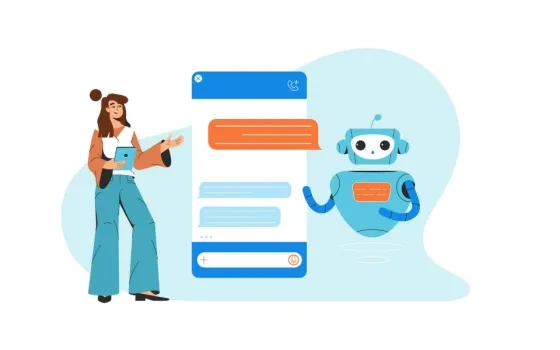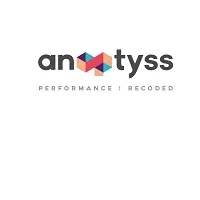Insurance service providers are under intense pressure to fulfill the expectations of diverse policyholder base. Modern policyholders demand instant responses and personalized service around the clock. Traditional insurance software systems struggle to deliver this level of accessibility and responsiveness.
Do you think complex terms and documents in traditional insurance management software help customers understand their coverage? Not at all. Insurance documents and policies contain terminology that confuses clients and creates communication barriers. When customers can't understand their coverage details, they lose confidence in their insurance provider.
What is the solution? Intelligent chatbots integration in insurance management software.
These intelligent assistants handle customer queries, process routine claims, and provide policy guidance without time constraints or human intervention. Chatbots in the insurance management system bridge the communication gap by translating complex insurance terminology into clear, understandable language that customers can easily grasp.
Chatbots-Integrated Insurance Software System – Understanding the Relevance
Insurance companies understand that adding conversational capabilities isn't optional anymore; it's crucial to stay in business. The global insurance conversational interface implementation market is predicted to shift from 970 million USD in 2025 to 2.5 billion USD by 2030. Insurance chatbots built using robust artificial intelligence algorithms go way beyond the reach and influence of answering simple questions for insurers. These intelligent systems work as complete business partners and handle complex insurance operations in departments of all sizes.
Chatbots in insurance management systems qualify potential customers through targeted questions and provide individual-specific policy recommendations in marketing and sales. Website visitors receive proactive engagement that turns casual browsers into qualified prospects. By assessing customer profiles, chatbots execute cross-selling insurance campaigns at the perfect moment.
When insurers implement an insurance software system equipped with intelligent chatbots, they can:
- Improve Policyholder Loyalty—Chatbots in insurance management software help users navigate every stage of the insurance lifecycle. They build long-term loyalty by making policy information easier to understand and claims submission straightforward.
Control Resources—Automated customer interactions minimize the need for extensive human agent coverage while maintaining service quality standards. Human agents focus on complex cases requiring emotional intelligence and specialized judgment, while chatbots manage repetitive tasks.
- Optimize Internal Processes—Insurance software systems with chatbots optimize internal processes. Underwriters receive preliminary data collection support, while the system helps detect fraud and gives agents quick access to policy details.
Insurers benefit from optimized operations, lower costs, and better customer satisfaction. Human agents can now focus on complex cases that need empathy and judgment instead of handling routine tasks.
The most successful providers understand a fundamental shift: modern chatbots have become strategic assets that reshape the scene of how insurance companies do business.
Expert Configuration: Building Reliable Chatbots in Insurance Management Systems
Building effective chatbots for insurance management software requires specialized domain expertise. Insurance-specific regulations, compliance requirements, and complex terminology demand knowledge that goes beyond basic programming skills. Several businesses attempt chatbot implementation with general development teams, only to discover that insurance processes require industry-specific understanding.
That's why partnering with established insurance software companies is essential for successful chatbot deployment.
1. Chatbot Architecture Design
The foundation of robust chatbot implementation starts with architecture designing. Experts evaluate existing systems before selecting appropriate development frameworks. They determine whether rule-based, AI-powered, or hybrid approaches align with specific insurance functions while ensuring smooth integration with legacy platforms.
Architecture specialists analyze the current insurance management system infrastructure to identify potential integration challenges. This assessment enables them to design chatbot systems that work seamlessly with existing policy management, claims processing, and customer databases without disrupting ongoing operations.
2. Chatbot Use Case Determination and Training Data Preparation
Insurance technology experts discover effective automation opportunities by assessing customer interaction patterns and operational bottlenecks. This step involves gathering and managing training data, including policy documents, claims scenarios, and customer queries related to insurance ecosystem.
Training data preparation requires understanding insurance terminology, regulatory compliance, and customer communication patterns. Experts categorize this information to ensure chatbots respond accurately to policy inquiries, claims questions, and coverage explanations.
3. Conversation Flow and Dialog Management Configuration
Development teams create conversation flows that mirror actual insurance processes. They design dialog pathways for complex scenarios ranging from policy inquiries to claim submissions. Each interaction pathway includes decision points, escalation protocols, and responses aligned with company policies and compliance requirements.
Dialog management configuration ensures chatbots handle multiple conversation threads while maintaining context throughout customer interactions. This prevents confusion when customers switch between topics or need assistance with multiple policies.
4. Testing, Optimization, and Full-Scale Deployment
Comprehensive testing validates chatbot performance across various insurance scenarios before deployment. This involves simulation of real customer interactions, edge case testing, and compliance verification to ensure accurate responses.
Insurance industry software experts monitor chatbot interactions continuously after deployment, refining response algorithms and expanding capabilities based on performance metrics. This ongoing optimization approach ensures chatbots adapt to changing business requirements and maintain service quality standards.
Types of Chatbots Integrated in Insurance Management Systems to Perform Various Tasks
Insurance providers can use specialized chatbots to boost their digital capabilities. Insurance software companies configure and integrate different chatbots in management systems that match specific operational functions.
I. Sales Inquiry and Conversion Chatbots
Digital insurance agents in the form of pre-sales chatbots work on company websites. These virtual assistants qualify prospects by asking visitors targeted questions about their coverage needs. They excel at turning casual browsers into potential clients through instant quotes and clear policy explanations.
II. Policyholder Support and Retention Chatbots
Support chatbots become crucial in the insurance software system after customers sign up. These bots handle policy questions, help customers with claims procedures, and send timely renewal reminders. They prove invaluable during peak periods by managing routine questions while human agents focus on complex cases.
III. Personalized Policy Offer Recommendation Chatbots
Smart policy recommendation bots assess customer data to suggest appropriate coverage options. They identify protection gaps and recommend policy additions based on life events or changing circumstances, thanks to client profiles in the insurance industry software.
IV. Campaign Orchestrator Chatbots
Marketing teams in insurance firms can rely on these specialized assistants to run promotional campaigns. They share details about new products, seasonal offers, and loyalty programs through customers' preferred channels. These bots measure engagement metrics to improve future outreach efforts.
V. Billing and Subscription Chatbots
Financial management bots handle all payment-related tasks. They process premium payments, explain billing statements, arrange automatic renewals, and resolve payment disputes. These round-the-clock financial assistants ensure continuous coverage through efficient payment processing.
Final Words
Chatbots have revolutionized the insurance industry by turning a traditional model into a dynamic, customer-focused ecosystem. These AI-powered assistants are now crucial components for insurance providers who want to remain competitive. They've grown from basic question-answering tools into sophisticated systems that handle complex operations in multiple departments.
When insurance management software combines with conversational AI, it creates a powerful solution to several critical challenges. Customers get instant, extensive service while companies optimize operations and reduce costs. It also frees human agents from repetitive work so they can focus on complex cases that need emotional intelligence and expert judgment.













